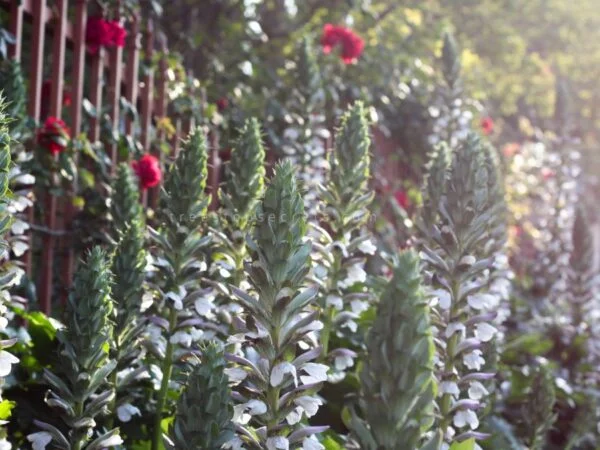Curious about where sycamore trees thrive? These majestic beauties, known for their striking white bark and vibrant leaves, have a surprising range. From the eastern United States to parts of Europe and Asia, sycamores boldly stand out in various landscapes. Whether you're strolling through an American forest or exploring European countryside vistas, spotting these iconic trees and natural stands can be a delightful contrast against other flora.
Sycamores in forest types aren't shy - they proudly show off their unique leaf features wherever they grow. So if you've ever wondered where these eye-catching giants call home, get ready for a journey across continents as we uncover the diverse locations that sycamore trees are proud to inhabit.
Key Takeaways
- Sycamore trees are commonly found in North America, Europe, and parts of Asia, preferring moist soil near rivers and streams.
- To thrive, sycamore trees require adequate sunlight, water, and well-drained soil, making them ideal for riparian areas and floodplains.
- These trees play a crucial role in ecosystems by providing food and shelter for various wildlife species, contributing to biodiversity.
- In human landscapes, sycamore trees are valued for their shade, ornamental beauty, and erosion control along water bodies.
- Threats such as habitat loss and climate change endanger sycamore tree populations, highlighting the need for conservation efforts to protect these vital species.
- Identifying sycamore trees can be done by examining their distinctive mottled bark, large hand-shaped leaves, and round seed balls.
Sycamore Trees Overview
Description
Sycamore trees are massive deciduous trees known for their wide, spreading canopy. The bark of a sycamore tree is unique, featuring patches of white and gray that peel away to reveal smooth, pale yellow inner bark. Their leaves are palmate-shaped with five lobes, adding to their distinct appearance.
One notable characteristic of sycamore trees is their distribution across various continents. In North America, these trees can be found from Canada down to Mexico. They thrive in Europe's landscapes, particularly in countries like England, France, and Germany. Their broad range makes them a familiar sight in diverse environments.
Distribution
The native range of sycamore trees spans much of the eastern United States. These majestic trees call regions such as the Appalachian Mountains and the Mississippi River Valley home. Moreover, sycamores also grow naturally in parts of southern Ontario in Canada. This widespread presence showcases the adaptability and resilience of these iconic trees.
-
Pros:
-
Distinctive appearance with unique bark patterns.
-
Wide distribution across North America and Europe.
-
Cons:
-
Can be susceptible to certain pests or diseases.
Habitat Preferences
Climate Requirements
Sycamore trees are typically found in regions with temperate climates and moderate rainfall. They thrive in areas that experience warm summers and mild winters, making them well-suited for locations with a balanced seasonal variation. While they can withstand a range of temperatures, sycamores do not do well in extreme heat or cold conditions. For optimal growth, these trees prefer environments that offer a harmonious blend of warmth and coolness throughout the year.
In terms of soil preferences, sycamore trees favor moist and well-drained soils. They exhibit adaptability to various soil types such as loamy, sandy, or clay soils, showcasing their resilience to different environmental conditions. Although sycamores can endure periodic flooding events, they struggle to thrive in waterlogged grounds due to potential root suffocation issues. Their ability to grow in diverse soil compositions enables them to establish themselves across a wide range of landscapes.
Associated Forest Cover
Sycamore trees often inhabit mixed hardwood forests where they coexist with other tree species like oak, maple, and hickory. This shared habitat creates a rich ecosystem that supports biodiversity within the forest environment. Sycamores are commonly sighted near bodies of water such as rivers, streams, and wetlands due to their affinity for moist conditions.
In certain regions, sycamore trees form pure stands or dominate riparian habitats along riverbanks and floodplains. These areas provide an ideal setting for sycamores to flourish as they benefit from the proximity to water sources while contributing significantly to the ecological balance of these riparian ecosystems.
Environmental Conditions
Habitat Specifics
Sycamore trees thrive in environments with lots of sunlight. They are commonly spotted along riverbanks, floodplains, and in open woodlands. These trees also grow in disturbed areas like roadsides and abandoned fields where they can take root easily.
In habitats rich in sunlight, sycamores flourish. You can often find them growing along riverbanks, floodplains, and even in open woodlands. These resilient trees can establish themselves in areas that have been disrupted by human activities such as roadsides or abandoned fields.
Growth Conditions
For optimal growth, sycamore trees need full sun exposure but can manage with some shade too. Their growth rate is quite impressive, especially when they are young saplings. Sycamores demand a good amount of moisture to thrive well; during dry spells or droughts, they might struggle to grow.
Sycamore trees require plenty of sunlight for their development but can also tolerate partial shade if necessary. When these trees are young, their growth rate is notably fast compared to other tree species. Moreover, sycamores need sufficient moisture for optimal growth; without enough water supply during dry periods or droughts may hinder their development.
Ecology of Sycamore Trees
Life History
Sycamore trees are known for their impressive longevity, with some individuals surviving for centuries. These majestic trees can tower over 100 feet in height, boasting a broad crown that provides ample shade. Throughout the year, sycamores undergo distinct seasonal changes; they shed their leaves during the fall and sprout fresh foliage come springtime.
The life history of sycamore trees showcases their resilience and adaptability to changing environmental conditions. Their ability to thrive for hundreds of years highlights the importance of these trees in maintaining biodiversity and ecosystem balance. The towering stature and widespread canopy make sycamores vital components of forest ecosystems by providing habitat for various wildlife species.
Reproduction
Sycamore trees employ both sexual and asexual reproduction methods to ensure their survival and propagation. They produce petite flowers that rely on wind or insects for pollination, showcasing nature's intricate mechanisms at play. Sycamores generate winged seeds known as samaras that catch the wind, aiding in dispersal to new locations.
Reproduction is a crucial phase in the lifecycle of sycamore trees as it ensures genetic diversity within populations and allows these magnificent specimens to spread across different habitats. By producing copious amounts of seeds dispersed by wind, sycamores increase their chances of colonizing new areas efficiently while adapting to diverse environmental conditions.
Importance in Ecosystems
Host Plants
Sycamore trees, despite not being host plants for specific insect species, play a crucial role in ecosystems. These majestic trees offer both habitat and food sources for various wildlife. Due to their towering height and sturdy branches, sycamores serve as ideal nesting sites for numerous bird species. For instance, the American goldfinch often builds its nest on sycamore branches due to their strength.
Moreover, the broad leaves of sycamore trees provide shelter and sustenance for different animals like squirrels and raccoons. These mammals find refuge among the thick foliage of sycamores while also benefiting from the seeds produced by these trees. The absence of host plant status does not diminish the significant contribution that sycamore trees make to supporting diverse wildlife populations.
Wildlife Value
The large size and abundant foliage of sycamore trees contribute significantly to their value in supporting wildlife diversity within ecosystems. Various bird species such as woodpeckers, owls, and warblers are commonly found nesting in these tall trees due to their spacious canopies offering protection from predators. This creates a harmonious ecosystem where birds thrive amidst the sturdy branches of sycamores.
Mammals like squirrels benefit greatly from sycamores' presence as they rely on these trees for both shelter and food resources. Squirrels often build nests in tree hollows or use cavities created by woodpeckers within sycamores as safe havens against harsh weather conditions or potential threats from predators. Overall, the rich biodiversity supported by sycamore habitats underscores their vital role in maintaining healthy ecosystems.
Human Landscapes
Historical Uses
Sycamore trees have been integral to human societies for centuries. Native Americans valued sycamore bark for creating essential items like baskets, ropes, and mats. They recognized the durability and flexibility of sycamore wood, using it to craft furniture, musical instruments, and butcher blocks. Early settlers in the United States relied on sycamore logs for constructing sturdy cabins and fences.
The historical significance of sycamores extends beyond practical uses; their versatility has played a crucial role in shaping landscapes throughout history. From providing materials for everyday items to contributing to the structural integrity of early settlements, sycamores have left an indelible mark on human civilization.
Special Uses
Modern society continues to benefit from sycamore wood, which is commonly employed in producing veneer, plywood, and crates due to its strength and workability. Beyond its utilitarian value, the distinctive bark of sycamores is also utilized decoratively in various settings. Furthermore, these trees are frequently planted as ornamental shade trees in parks and urban landscapes.
The special uses of sycamores highlight their adaptability across different industries while enhancing the aesthetic appeal of recreational spaces such as parks or gardens.
Symbolism
Beyond their practical applications, sycamore trees hold symbolic importance across cultures and religions worldwide. In ancient Egyptian mythology, they were revered as sacred symbols associated with life and fertility. Similarly, Celtic folklore attributed protective qualities against evil spirits to the majestic sycamore tree.
The symbolism surrounding sycamores underscores their spiritual significance throughout history while adding depth to their presence in various cultural narratives.
Threats and Conservation
Threats
Sycamore trees face various threats that can impact their health and survival. One significant threat is diseases like anthracnose, which can strip the tree of its leaves and weaken its overall well-being. Another menace comes from invasive pests, such as the Asian longhorn beetle, which tunnel into the wood of sycamores, causing extensive damage to the tree.
Habitat loss due to urbanization and land development poses a severe danger to sycamore populations. As cities expand and natural areas are converted for human use, sycamores lose their habitats, leading to a decline in their numbers. This loss of habitat disrupts ecosystems where these trees play a crucial role in supporting biodiversity.
Conservation Efforts
To combat these threats, various conservation efforts are underway to protect sycamore trees and ensure their continued existence. Conservation organizations actively engage in habitat restoration projects aimed at preserving suitable environments for sycamores to thrive. By restoring natural habitats or creating new ones, these organizations contribute significantly to safeguarding sycamore populations.
Efforts also focus on controlling invasive pests that pose risks to sycamores by implementing measures like quarantine protocols and raising awareness among the public about these destructive insects. Planting native sycamores in urban settings serves multiple purposes: it helps maintain genetic diversity within the species while providing valuable wildlife habitats within city landscapes.
Identifying Sycamores
Tree identification apps are handy tools for pinpointing where sycamore trees are found. These applications help users recognize sycamores by their unique characteristics, such as their mottled bark and large, maple-like leaves. By utilizing these apps, individuals can easily identify sycamores based on features like their distinctive white and tan peeling bark.
These apps not only aid in tree identification but also offer valuable insights into the distribution and habitat requirements of sycamore trees. They provide essential information about where these trees thrive best—usually near rivers or streams due to their preference for moist soil conditions. Users can learn more about the ecological importance of sycamores through these apps, contributing to a deeper understanding of the species' significance in local ecosystems.
Citizen science initiatives benefit from tree ID apps as they allow users to report sightings of sycamore trees accurately. By reporting locations where sycamores are found, individuals contribute valuable data that can aid conservation efforts. This crowdsourced information helps researchers map out the range and distribution of sycamore trees more comprehensively.
Moreover, engaging with citizen science initiatives through tree identification apps empowers individuals to play an active role in monitoring and protecting sycamore populations. By participating in these initiatives, people become stewards of nature by helping track the health and status of sycamore trees in various regions. This collaborative approach fosters a sense of community involvement and environmental stewardship among participants.
You've now explored the vast world of sycamore trees, from their preferred habitats to their crucial role in ecosystems. Understanding their significance can inspire you to appreciate the intricate balance of nature. Remember, preserving these majestic trees is not just about conservation; it's about safeguarding a piece of our planet's history.
As you venture outdoors, keep an eye out for these towering giants and take a moment to admire their beauty. Your awareness and appreciation can contribute to the protection of sycamores and the diverse ecosystems they support. Let's work together to ensure that future generations can marvel at the grandeur of sycamore trees as we do today.
Frequently Asked Questions
Where do sycamore trees typically grow?
Sycamore trees are commonly found in temperate regions of the Northern Hemisphere, including North America, Europe, and Asia. They thrive in moist soils along riverbanks, floodplains, and valleys.
What environmental conditions do sycamore trees prefer?
Sycamore trees prefer areas with abundant sunlight and moist soil that is well-drained. They can tolerate a range of soil types but generally thrive in fertile soils near water sources.
How do sycamore trees contribute to ecosystems?
Sycamore trees provide habitat and food for various wildlife species like birds and insects. Their large leaves help create shade, while their seeds serve as a food source for animals, contributing to biodiversity within ecosystems.
Are there any threats to sycamore trees?
Sycamores face threats from deforestation, urban development, pollution, pests like anthracnose disease. Conservation efforts focus on preserving their habitats through reforestation programs and raising awareness about their ecological importance.
How can one identify sycamore trees?
Identifying features of sycamores include their mottled bark resembling camouflage patterns; large palmate leaves with 3-5 lobes; distinctive seed balls hanging from branches; exfoliating bark revealing white patches underneath.
Image Source: Paid image from CANVA




